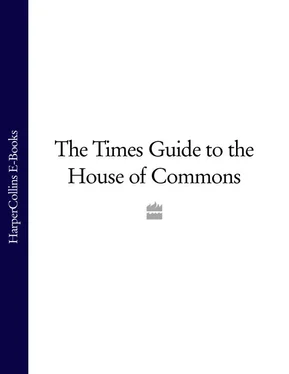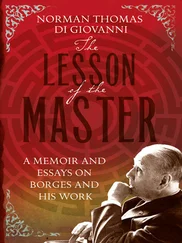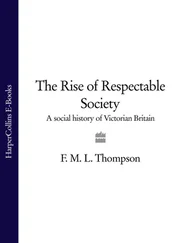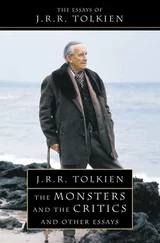1 ...8 9 10 12 13 14 ...46 Although the Conservatives failed to secure an overall Commons majority, they still gained 100 seats and one of the largest swings of votes ever recorded. There were big variations in party performance in different parts of the country, and all three main parties both gained and lost seats. In detail, the election was notable for a big increase in turnout of 3.7 points up to 65.1 per cent. This was still well below the levels familiar before 2001 (a range of 71 to 79 per cent between 1955 and 1997) but it partly reversed the sharp decline in 2001, down to 59.4 per cent, with just a small recovery to 61.4 per cent in 2005. The Conservatives boosted their share of the vote by 3.7 points to 36 per cent. With the higher turnout, this gave them nearly 2 million more votes, up to 10.71 million. This was a clear 2 million ahead of Labour, which suffered a decline of nearly 1 million in its vote to 8.6 million. Its share of the vote fell by 6.2 points to 29 per cent, its lowest since 1983.
Many Labour MPs were relieved that the party had not done worse, partly because of fears towards the end of the campaign that it might come third in share of the votes and win only 200 to 220 MPs. Labour also did well in the borough elections in inner London and in district elections in some northern and big cities. But May 6 was still the party’s second worst performance since 1918 and most of its gains achieved since the early 1990s in the Midlands and southern England outside the big cities were reversed.
More than a third of voters, 35 per cent, voted for parties other than the Tories and Labour, the highest proportion since 1918. Conversely, the creation of the coalition means that, together, the Conservatives and Liberal Democrats won, at 59 per cent, the highest percentage of the vote for any new government since 1945. The Liberal Democrats managed to raise their vote by nearly 850,000 to 6.83 million, an increase of 1 point to 23 per cent. The Democratic Unionists are now the second largest opposition party, although with just eight MPs after Peter Robinson, their leader and the First Minister, lost his seat to the Alliance party, which gained its first Westminster MP.
The Scottish Nationalists were unchanged on six seats (although they did lose a by-election gain) with Plaid Cymru on three seats. The UK Independence Party did, as usual in general elections, much less well than in the previous European Parliament elections, but boosted its vote by a third to 917,832, an increase of 0.9 points to 3.1 per cent. This partly reflected a rise of 62 in its number of candidates up to 558.
The British National Party, with 220 more candidates, at 339, nearly tripled its vote to 564,000, a rise of 1.2 points to 1.9 per cent. The Greens, who gained their first MP, maintained their vote in absolute terms at 286,000, but had a 0.1 point decline in share to 1 per cent.
The Conservatives always faced an uphill struggle to win an overall Commons majority. Their starting point of 198 MPs was less than Labour at its lowest point in 1983 of 209. Even after adjusting for the boundary changes that came into force in the May 2010 election and produced a notional gain for the Conservatives up to 209, the party still faced a huge mountain.
The swing of 4.9 per cent from Labour to the Tories was the third largest since 1945, exceeded only by the huge 10.2 per cent swing to Labour in the Blair landslide in 1997 and the 5.3 per cent swing to the Tories under Margaret Thatcher in 1979. The May 6 swing was exactly the same as the late Sir Edward Heath achieved when winning office in 1970, but it was still not enough to produce an overall Conservative majority, given the number of seats that had to be won.
The Tory share of votes cast, at 36 per cent, was the party’s lowest lower for a century and a half, apart from the three Blair victories in 1997, 2001 and 2005. The most comparable performances were in the 1920s, another era of three-party politics. The Tories won 37 to 38 per cent of the total votes cast in three of the four general elections in the 1920s.
Nevertheless, the Conservatives gained a net 96 seats, rising to 306, only 20 short of an overall majority. This involved 100 gains and four loses (all but one to the Liberal Democrats). This is the largest number of seats gained by the Conservatives at a single general election since 1931 after the collapse of the Labour Government. It exceeds the 62 seats gained by Mrs Thatcher in 1979 and the 58 gained in 1983; and, in its turn, is exceeded only by Labour’s 236 gains in 1945 and 147 in 1997.
Labour lost a net 90 MPs, with 94 losses and four gains (including from independents in Blaenau Gwent and Bethnal Green & Bow). This is by far the worst Labour performance since its debacle in 1931, when it was reduced to just 52 MPs. Since the 1945 election, the biggest Labour losses of seats have been 78 MPs in 1950, 76 in 1970, and 60 in 1983.
The Lib Dems suffered a net loss of 5 seats, down to 57. This involved a loss of 13 seats (all but one to the Tories) and a gain of 8 (5 from Labour and 3 from the Tories).
One of the most striking features of election night was how the Tories won seats very high up on their target list but failed to win ones lower down, the mirror image of the Labour performance. For instance, the Tories captured Cannock Chase on a 14 per cent swing, but failed to take Birmingham Edgbaston, which required a swing of only 2 per cent. Gisela Stuart, the victor in Egbaston, was one of the heroines in being an early winner in the Blair landslide of 1997 and, apart from a brief period as a minister, she has been an independent- minded backbencher, notably on Europe.
Of the 116 gains needed to win an overall majority, the Tories failed to capture 34, nearly half of which were successfully retained by the Lib Dems. The Lib Dems’ net loss of seats was disappointing to them after the high expectations produced by Nick Clegg’s success in the television debates. Yet the party did well in resisting the broader pro-Tory swing, notably in some of the top 30 Tory targets, such as Cheltenham, Somerton & Frome, Eastleigh, Westmoreland & Lonsdale, Carshalton & Wallington and Taunton Deane (three held by future ministers in the coalition Government). The Tories also failed to win any of their target seats from the SNP.
The other Labour seats to hold out against the trend were Westminster North (held by Karen Buck against the controversial Tory barrister Joanne Cash), Eltham, Bradford West, Hammersmith, Halifax, Gedling, Poplar & Limehouse (where Jim Fitzpatrick easily saw off George Galloway, the former Respect MP), Elmet & Rothwell (where Ed Balls held on after a fierce campaign), Tynemouth, Bolton West and Bolton North East.
Labour did worse in England (down 7.4 points) and slightly worse in Wales (down 6.5 points) than it did nationwide (down 6.2 points), but managed to improve its relative share in Scotland by 3.1 points compared with 2005. In England, the best Labour performances were in London, where the swing to the Tories was just 2.5 per cent, half the UK average. This explains its success in holding on, against the trend, to the seats mentioned above, as well as in seeing off Lib Dem challenges in Islington South and the new Hampstead & Kilburn seat (where Glenda Jackson beat her Tory challenger by 42 votes in a tight three-way contest).
Labour’s vote fell by 2.3 per cent in London, but 8.2 per cent elsewhere in England and, apart from Battersea, the Tory gains were concentrated in a band on the northwest of the capital, from Brentford & Isleworth, via Ealing Central & Acton, up to Harrow East and Hendon. Labour did well in seats with a large Muslim population, where the party suffered in 2005 because of the Iraq war, such as some in East London where Respect had done well in 2005 (East Ham, West Ham and Bethnal Green & Bow).
Читать дальше












